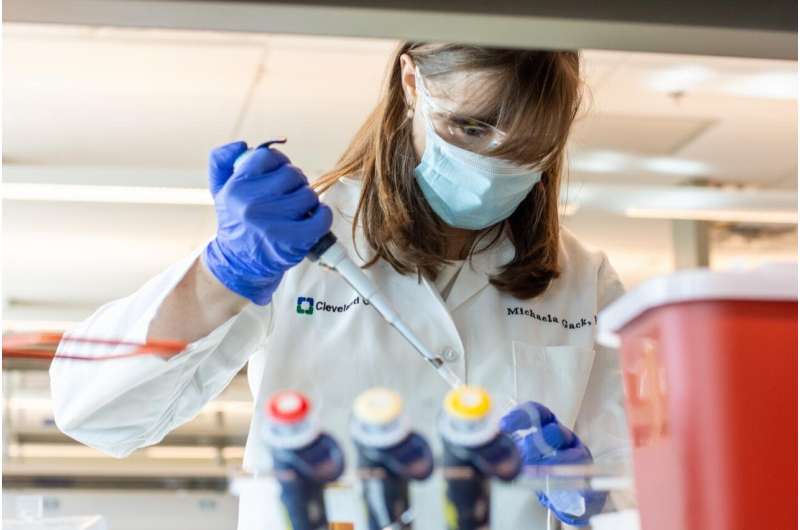New study points to novel drug target for treating COVID-19


Researchers from Cleveland Clinic’s Florida Research and Innovation Center (FRIC) have identified a potential new target for anti-COVID-19 therapies. Their findings were published in Nature Microbiology.
Led by FRIC scientific director Michaela Gack, Ph.D., the team discovered that a coronavirus enzyme called PLpro (papain-like protease) blocks the body’s immune response to the infection. More research is necessary, but the findings suggest that therapeutics that inhibit the enzyme may help treat COVID-19.
“SARS-CoV-2—the virus that causes COVID-19—has evolved quickly against many of the body’s well-known defense mechanisms,” Gack said. “Our findings, however, offer insights into a never-before characterized mechanism of immune activation and how PLpro disrupts this response, enabling SARS-CoV-2 to freely replicate and wreak havoc throughout the host. We discovered that inhibiting PLpro may help rescue the early immune response that is key to limiting viral replication and spread.”
One of the body’s frontline immune defenses is a class of receptor proteins, including one called MDA5, that identify invaders by foreign patterns in their genetic material. When the receptors recognize a foreign pattern, they become activated and kick-start the immune system into antiviral mode. This is done in part by increasing the downstream expression of proteins encoded by interferon-stimulated genes (ISGs).
In this study, Gack and her team identified a novel mechanism that leads to MDA5 activation during virus infection. They found that ISG15 must physically bind to specific regions in the MDA5 receptor—a process termed ISGylation—in order for MDA5 to effectively activate and unleash antiviral actors against invaders. They showed that ISGylation helps to promote the formation of larger MDA5 protein complexes, which ultimately results in a more robust immune response against a range of viruses.
“While discovery of a novel mechanism of immune activation is exciting on its own,” Gack said, “we also discovered a bit of bad news, which is that SARS-CoV-2 also understands how the mechanism works, considering it has already developed a strategy to block it.”
The research team shows that the coronavirus enzyme PLpro physically interacts with the receptor MDA5 and inhibits the ISGylation process.
Source: Read Full Article